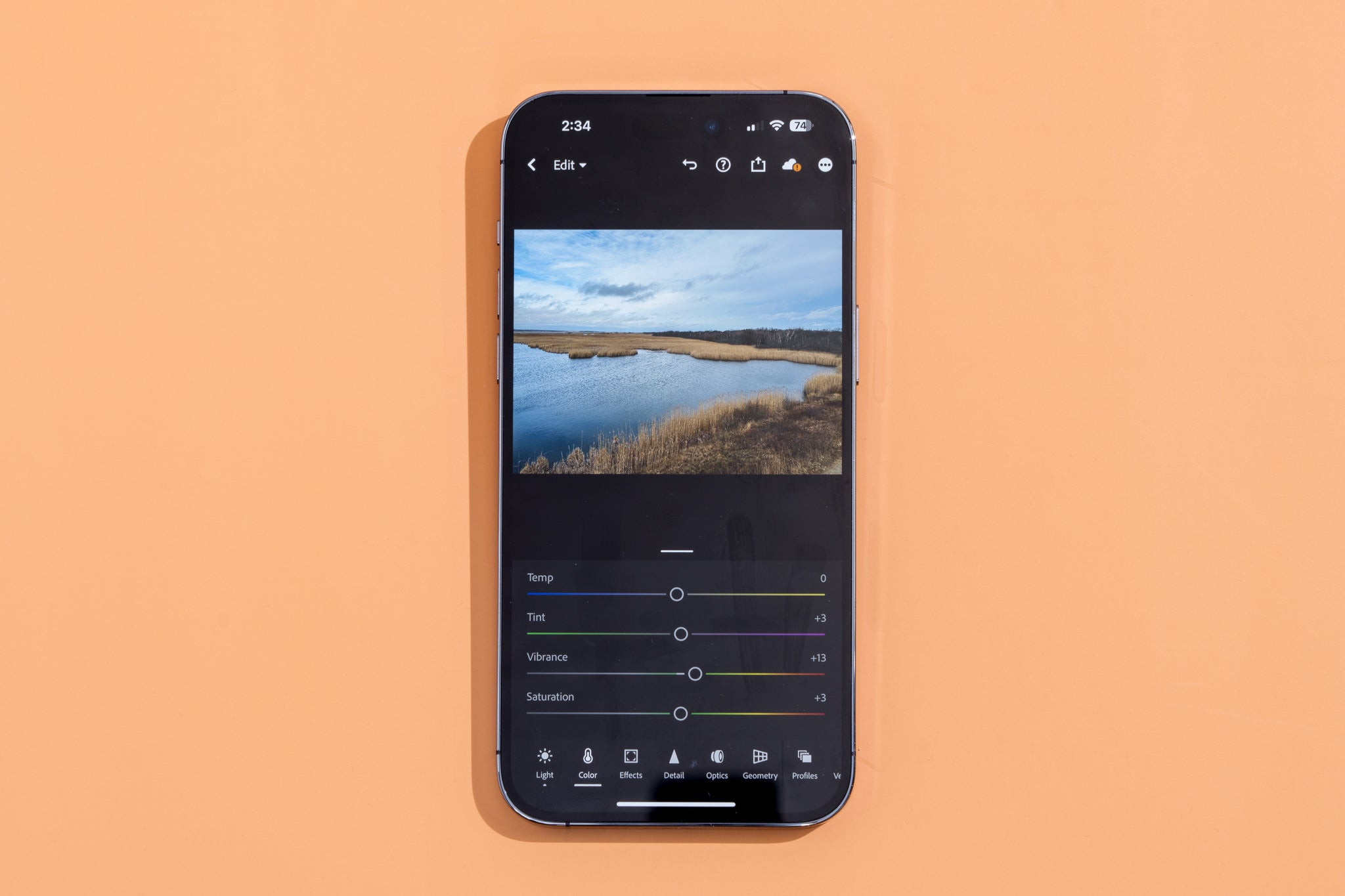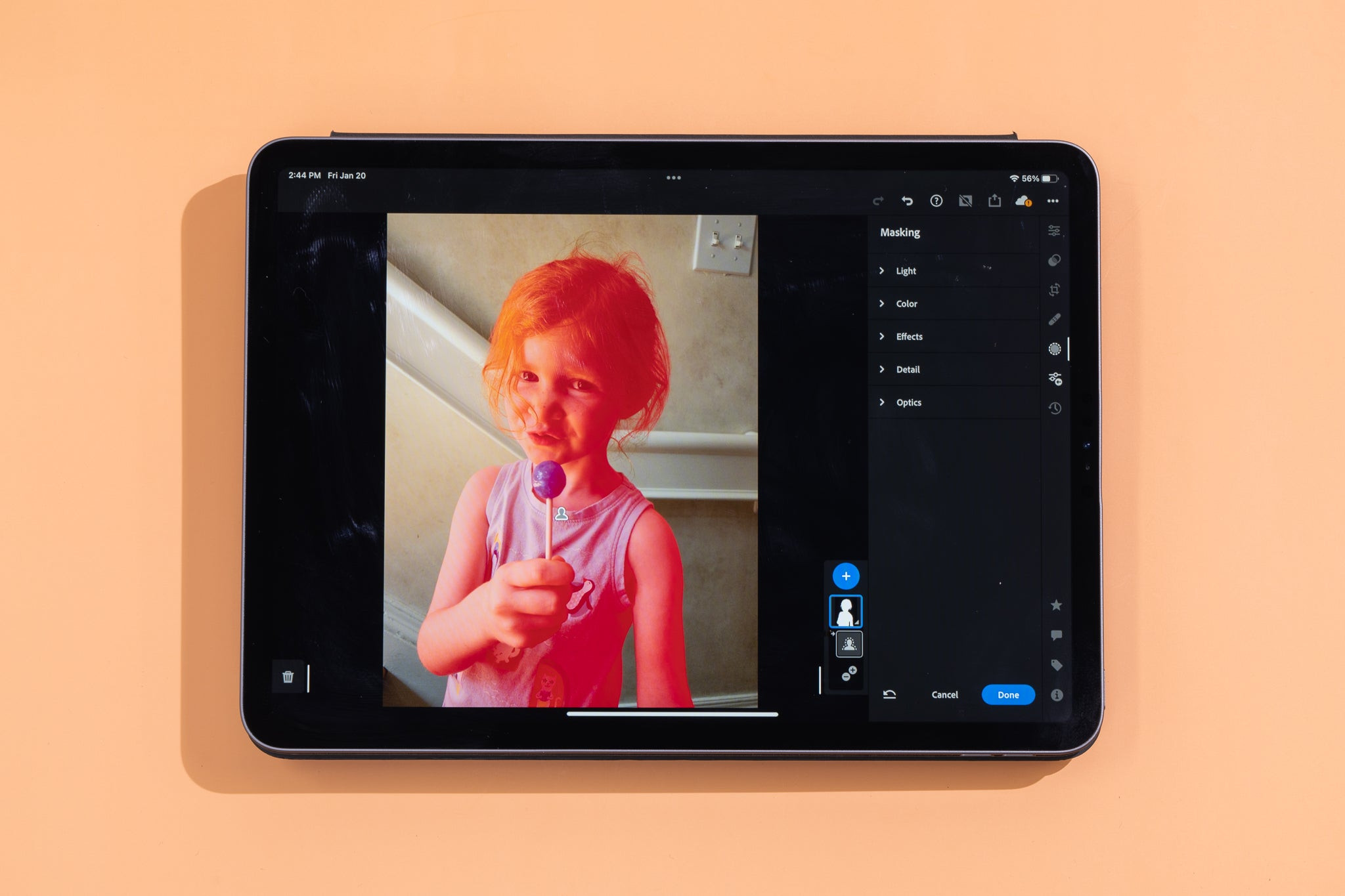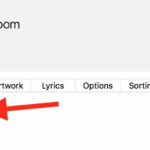In today’s digital age, capturing photos is effortless, but transforming them into stunning visuals often requires the right editing tools. For anyone seeking to enhance their smartphone photography, a reliable photo editing app is indispensable. Among the plethora of options available for both Android and iOS, Adobe Lightroom consistently emerges as the top contender, offering a powerful yet versatile platform for photographers of all skill levels. Whether you’re a casual user or a seasoned professional, Lightroom’s robust free version and feature-rich premium subscription make it the best photo editing app to elevate your images.

A smartphone displaying the user interface of the Adobe Lightroom application, showcasing its editing capabilities for mobile photography.
Why Adobe Lightroom Reigns Supreme as the Best Photo Editing App
Adobe Lightroom stands out as the best photo editing app due to its unparalleled combination of extensive editing tools, user-friendly interface, and seamless workflow. It’s not just about applying filters; Lightroom provides granular control over every aspect of your image, allowing for precise adjustments that can dramatically improve the final result.
Unmatched Photo Editing Capabilities for Professional Results
Lightroom’s strength lies in its comprehensive suite of editing tools that rival desktop software capabilities, all within a mobile app. From basic adjustments like exposure, contrast, and saturation to advanced tools such as curves, noise reduction, and dehaze, Lightroom offers an unmatched range of control. This allows users to fine-tune their photos to perfection, rescuing underexposed shots and enhancing already well-captured images.
In tests comparing Lightroom with other popular apps like Snapseed, Lightroom consistently produced superior results, particularly in shadow recovery. It excels at bringing back detail and color from the darkest areas of an image, a crucial feature for preserving image quality and maximizing visual impact. Furthermore, Lightroom is unique in its inclusion of lens profiles for smartphones, DSLRs, and mirrorless cameras. These profiles automatically correct distortion and vignetting specific to your lens, ensuring technically accurate and visually pleasing photos directly from your mobile device.

An iPad displaying Adobe Lightroom’s masking tools during photo editing, highlighting the precise selection and adjustment capabilities for localized image enhancements.
The Power of AI and Feature-Rich Free Mode
Adobe has integrated cutting-edge AI-powered tools into Lightroom Mobile, further solidifying its position as the best photo editing app. Features like Generative Remove, Quick Actions, and Lens Blur leverage artificial intelligence to simplify complex edits and deliver impressive results. Generative Remove intelligently eliminates unwanted objects, Quick Actions applies smart adjustments to subjects, backgrounds, or skies, and Lens Blur adds realistic depth of field to your photos.
Crucially, a significant portion of Lightroom’s powerful features are available in its free mode. This includes almost all essential everyday editing tools, making it a remarkably generous offering compared to competitors. Free users gain access to technical tools like curves and noise reduction, features often locked behind paywalls in other apps. This accessibility makes Lightroom an excellent starting point for anyone exploring photo editing, providing professional-grade tools without any initial investment.
Intuitive Interface and Efficient Workflow
Despite its professional-grade capabilities, Lightroom boasts a relatively intuitive interface, especially for users familiar with Adobe’s desktop applications. The layout is clean and organized, with tools logically grouped into submenus accessible via icons at the bottom of the screen. This design ensures that the interface remains unobtrusive, maximizing the screen space for your photos.
Adjusting settings in Lightroom is remarkably precise. While sliders allow for broad changes, users can also tap left or right of the adjustment dot for micro-adjustments, offering granular control for meticulous editors. The double-tap reset feature provides quick reversion to the original setting, streamlining the editing process and encouraging experimentation.
Lightroom’s unique library system, while initially requiring photo import, offers significant advantages. It automatically saves a complete edit history, allowing users to revert to any stage of their editing process, even after extended breaks. This non-destructive editing approach, coupled with robust organizational features like albums, sorting, and filtering, makes Lightroom a powerful tool for managing and refining your photo library.
Subscription Value and Cross-Device Accessibility
While the free version of Lightroom is exceptionally capable, the premium subscription unlocks a suite of advanced features that cater to serious photographers. For a reasonable monthly or annual fee, users gain access to healing and masking tools, perspective correction, raw file editing, and enhanced presets. These features are invaluable for professional workflows and advanced creative editing.
Adobe offers subscription plans that extend Lightroom’s utility beyond mobile devices. For a competitive price, users can access Lightroom on both mobile and desktop, along with cloud storage options. This cross-device syncing capability ensures seamless editing workflows, allowing you to start editing on your phone and continue on your computer, or vice versa. The included cloud storage also serves as a valuable backup and organizational tool, particularly for photographers working with large volumes of high-resolution images.
Minor Considerations for New Users
While Lightroom is undeniably the best photo editing app overall, there are a couple of points to consider. For complete beginners, Lightroom’s interface, with its professional terminology and extensive toolset, may present a slightly steeper learning curve compared to simpler apps focused solely on filters. However, Lightroom mitigates this with interactive tutorials that guide users through various editing techniques, making it accessible even for novices willing to learn.
The cost of the premium subscription is another factor. While the free version is powerful, unlocking the full potential of Lightroom requires a paid subscription. Compared to one-time purchase apps, the subscription model represents an ongoing investment. However, the value provided by Lightroom’s comprehensive features, cross-device compatibility, and cloud services often justifies the cost for users serious about their photo editing. Finally, even for free users, creating an Adobe account is necessary, which may be a minor inconvenience for some.
Conclusion: Lightroom – Your Ultimate Photo Editing Companion
In conclusion, Adobe Lightroom stands as the best photo editing app for anyone seeking professional-level results on their mobile devices. Its extensive editing capabilities, generous free mode, intuitive interface, and powerful premium features make it a versatile tool for both casual enthusiasts and professional photographers. While there’s a slight learning curve for complete beginners and a cost associated with the premium version, the unmatched power and flexibility of Lightroom make it the ultimate photo editing companion for transforming your smartphone photos into captivating visual stories. Whether you’re aiming for subtle enhancements or dramatic transformations, Lightroom provides all the tools you need to unlock the full potential of your images.
